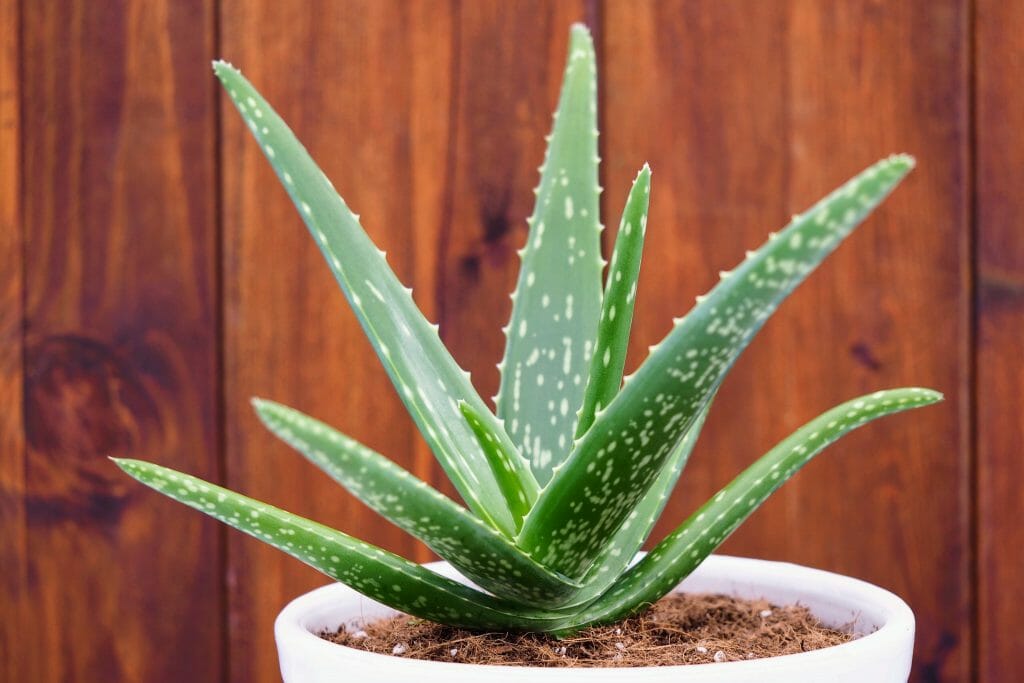The first thing you need to understand is that all cacti are classed as succulents. But of course, not all succulents are cacti. In general, all succulents can store water in their stems, leaves and roots. Plus, they are all drought-tolerant.
Obviously, the most common factor that identifies a cactus is it’s sharp spikes. The little round lumps that the spikes grow out of are called areoles. Non-cacti succulents don’t have these. Also, cacti don’t have leaves or branches.
So, let’s look at the differences between a cactus and other succulents.
What Classifies A Succulent As A Cactus?
As you now know, Cacti are a sub-species or family (Cactaceae) in the overall succulent classification. Interestingly, the term ‘succulent’ isn’t actually a scientific classification. It’s just a term that is used to describe drought-tolerant or water-storing plants.
There are a number of factors that identify a succulent as a cactus. These are:
- These are small, cushion-like, round mounds that grow all over the plant. This is where the spines, hairs and flowers grow from. This is the most significant characteristics that identifies a cactus. If the succulent doesn’t have these areoles even though it may have some spines, it’s not considered a cactus.
- Most cacti have no leaves or branches except in their seedling stage. Rather, they have long water-storing stems or the cactus itself is short and perfectly rounded. For example, the parts that look like leaves on a prickly pear are actually modified stems. These are called pads or ‘nopalitos’.
- Cacti also have a very thick skin that reduces evaporation.
- Most cacti have thick, pointy spines or thin bristles. However, there are a few without spines too. These have a wooly covering instead or long hairs.
- Whereas all cacti live in hot desert areas, there are some species of succulents that survive in very cold climates too.
What Are The Similarities Between Cacti And Other Succulents?
Obviously, being in the same classification, there have to be similarities between Cacti and other species of succulents. Here are the most important ones.
- All succulents can survive long periods without water. This allows them to survive in arid, desert regions in Mexico, Central, North and South America and South Africa.
- When growing succulents, including cacti, you need to understand their particular water requirements. Most importantly, the soil needs to be left to dry out before applying a deep soaking of water.
- Most succulents including cacti, have shallow root systems. The roots are close to the surface. This enables them to soak up as much available ground water as possible.
When A Succulent Is Not A Cactus
Some succulents have spines or thorns and look very much like a cactus. This can confuse many people. Both Aloe Vera and Haworthia have spiky, shiny leaves but they are not cacti. In addition, Agave is quite often thought of as a cactus because of its sharp spines on the tips of the leaves.
The tell-tale sign that these succulents are actually not cacti is their lack of areoles.
The reason that some succulents tend to look very similar to cacti can be put down to convergent evolution. This phenomenon causes unrelated plants and even animals to develop traits that are similar. It happens when plants and animals inhabit the same environment and have to adapt to the climatic conditions to survive.
Therefore, other succulents that inhabit the same desert areas as cacti, have adapted to allow them to survive the dry conditions. The emergence of spines also helps to ward off predators who are in search of water.
DON’T MISS: Learn how long it’ll take you to grow your own cactus!
Are Succulents One Family Of Plants?
No, succulents cover around 50-60 different botanical families including the cactus family (Cactaceae). Here’s a list of the most common families and the succulent species in each family.
| FAMILY | SPECIES (Genera) |
| Agavaceae | Agave, Yucca |
| Aizoaceae | Argyrodema, Cheiridopsis, Conophytum, Dactylopis, Faucaria, Fenestraria, Frithia, Glottiphyllum, Lapidaria, Lithops, Nananthus, Pleisopilos, Titanopsis, Delosperma, Mestoklema, Trichodiadema, Sphalmanthus |
| Aloaceae | Aloe, Astroloba, Gasteria, Haworthia |
| Apocynaceae | Adenium, Pachypodium, Plumeria, Caralluma, Duvalia, Edithcolea, Hoodia, Huernia, Orbea, Piranthus, Stapelia, Tavaresia, Brachystema, Ceropegia, Hoya |
| Bromeliaceae | Dyckia, Hechtia, Orthophylum, Tillandsia |
| Cactaceae | Opuntia, Cylindropuntia, Tephrocactus, Ariocarpus, Astrophytum, Borzicactus, Copiapoa, Coryphanta, Echinocactus, Echinocereus, Achinopsis, Ferocactus, Gymnocalycium, Lobivia, Mammillaria, Neoporteria, Notocactus, Parodia, Rebutia, Sulcorebutia, Discocactus, Melocactus, Carnegia, Cephalocereus, Cereus, Nyctocereus, Pachycereus, Cleistocactus, Espostoa, Oreocereus, Disocactus, Epiphyllum, xEpicactus, Rhipsalis, Schlumbergera, Selenicereus |
| Crassulaceae | Adromischus, Cotyledon, Crassula, Kalanchoe, Tylecodon, Dudleya, Echeveria, Graptopetalum, Pachyphytum, Tacitus, Aeonium, Sempervivum, Sedum |
| Euphorbiaceae | Euphorbia, Jatropha, Monadenium, Pedilanthus, Synadenium |
Source: https://fyi.extension.wisc.edu/sewmg/files/2018/03/MAJOR-FAMILIES-AND-GENERA-OF-SUCCULENT-PLANTS-3-5-18-handout.pdf (October 2017)
Frequently Asked Questions:
Is Aloe Vera a cactus or succulent?
An Aloe Vera plant is a succulent.
Why are cactus called succulents?
Cacti are classed as succulents because of their ability to store water in their stems. Plus, they are drought tolerant.
Do succulents need more water than cactus?
Generally, both succulents and cacti are drought-tolerant and you should allow the soil to dry out before watering them.
Final Thoughts
So, hopefully you’re a little wiser now about the difference between cactus and succulents. In fact, cacti are actually classed as succulents but are in a family of their own.
The most notable way to tell if a succulents is in fact a cactus is to see whether it possesses areoles. If these are present, then you can be fairly certain that your succulent is indeed a cactus.





